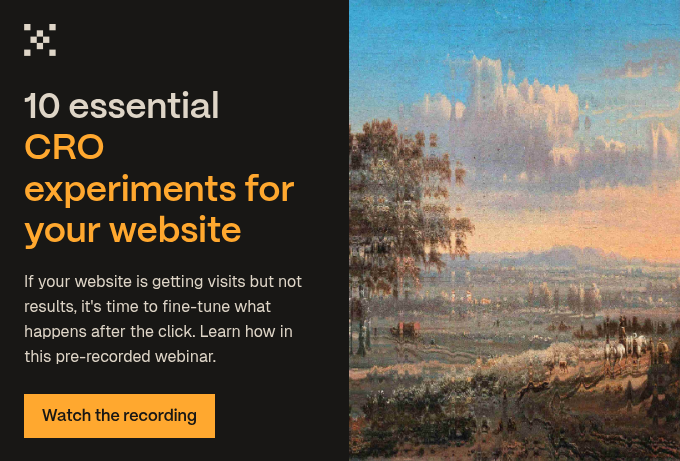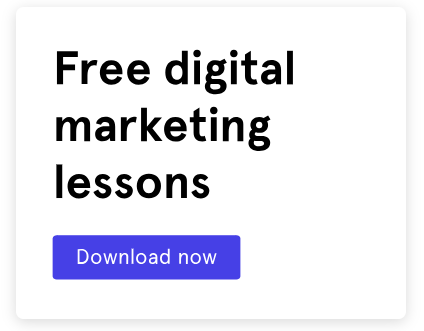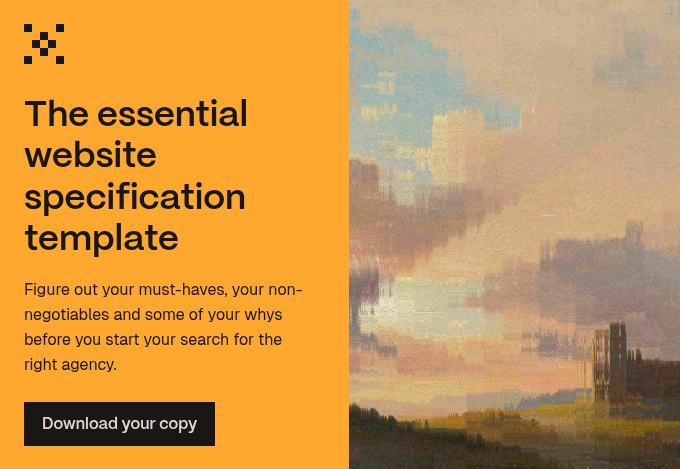‘Have you followed up on that lead, yet? The one that clicked on our new call-to-action?’
Said the long-suffering marketing manager, painfully aware of a pile of leads gathering dust in the database.
‘Yeah, I’ll action that tomorrow.’
Said the sales rep, painfully unaware that he’s forgotten how to speak like a normal human being. (Really? Has anyone EVER ‘actioned’ anything?)
CTAs lead the way
Marketing and sales teams are often found bickering about the quality of leads. In the background, you’ll notice the development team taking advantage of this repartee to quietly move their production deadlines. Thus – business as usual.
However, modern methods dictate that a contact is not just a piñata full of gold coins, but a savvy researcher with a hyperactive bullshit detector. The job of marketing is to aid that research. The job of sales is to clear the path to purchase. Let’s say you’re the lead in question. Marketing sets you off on a journey and sales welcomes you to the finish. Along the way, like cloaked guides on your quest, you will find CTAs.
What is a CTA?
‘CTA’ is short for ‘call-to-action.’ This is a button or image that leads to a landing page, normally offering something like access to a guide, ebook or template.
For example, the above CTA leads to a landing page that leads to a guide about how to get leads to convert on landing pages. Talk about meta.
And, it’s obvious where this CTA will lead if clicked – not to a dodgy new site, but to another page on the Articulate Marketing website.
Some tips on CTA copy
- People like free stuff. So, use the word ‘free’ (sparingly). Just don’t tell the sales team.
- Make it clear that you are who you say you are. People can confuse CTAs with third-party ads. It can be as simple as putting your company name in the body text.
- Use short, clear copy. Write like a human and keep it pithy. You have a fraction of a second to get someone’s attention here. Don’t waste it on waffle.
- Be positive. We’re not encouraging hyperbole, but positivity is just as clickable as negativity, when done right.
- Have a clear sense of your target audience. Use smart CTAs to target people in different stages of the buyer’s journey, and make sure your CTAs fit the context.
CTA examples
Here are some examples of CTAs that we use in our blogs, emails and elsewhere on our website. (At the time of writing, we have recently begun launching new branding, starting with our logo, CTAs and landing pages.)
Here’s a CTA that exemplifies the ‘less is more’ idiom:
It’s crystal clear what’s on offer here: an SEO checklist. And who is it targeted at? Decision-makers in B2B technology companies who are looking to improve their SEO strategy. The copy is as lean as possible. It makes this CTA undeniably easy to click, earning it a healthy 1.28 percent conversion rate.
We use this button CTA in some of our emails:
The button text speaks from the viewer’s perspective. By putting ‘I want marketing support’, rather than a directive like ‘Contact us’, we are aligning the viewer’s thinking with the action on offer.
This is a blog ‘sidebar’ CTA:
Yep. Free stuff. It’s always a winner. Of the people who viewed this page, over a third have submitted their contact details to sign up for these lessons.
CTA placement
Marketing requires a light touch. Neil Patel found that a CTA placed above the fold saw a click-rate decrease of 17 percent. This tells us that CTAs should integrate with the overall website experience. Think of them as polite hand-raisers rather than bullish interrupters.
Your CTAs also need to address different stages of the buyer’s journey. Avoid giving potential leads a small range of options restricted to: ‘book a meeting’, ‘contact us’ or ‘call today’. These CTAs may work well when placed strategically, but they’re never going to convert as highly as an offer that gives value to someone. It’s common sense, yet if you were to swap your marketing manager out for a sales person, this is exactly what they’d want to do. Guaranteed.
For example, this ‘Grammar guide for business writing’ has a landing page submission rate of about 43 percent:
Compared to this ‘Marketing assessment’, which has a landing page submission rate of just 6.25 percent:
The idea is that once you have people in your contact database, you can further engage them with lead nurturing efforts and CTAs in emails. This will give you the opportunity to qualify them as a potential client or customer, and give them the chance to invest time and trust in your business.
CTAs must represent real progress
People are motivated by progress towards a goal. They’re motivated by things like curiosity, discovery, mastery, value and reward. And carrots.
By using a variety of CTAs on your website, you are inviting site visitors to make progress. They don’t just want to learn the full scope of the problem they’re facing, they want to learn how to fix it, too. They want to explore their options and find trustworthy advice. They want to go down the rabbit hole of research and emerge wiser in mind and spirit.
A call-to-action has to be more than a desperate plea for clicks, rather, it must work as a sign-post on a journey towards a goal. The goal, for the site visitor, is to find the best answer to their problem. The goal for you and your business is to be that answer. Anyone might click a call-to-action, but your future customers are those that take that action as part of a journey, one that your marketing efforts have mapped, and one with your sales team waiting, helpfully, at the other end.
Successful marketing is as much about the journey as the goal. People act on impulse. People advance with purpose.

 Posted by
Maddy Leslie
Posted by
Maddy Leslie








.jpg?width=400&height=250&name=art-institute-of-chicago-pybByTGQ9zI-unsplash%201%20(1).jpg)


